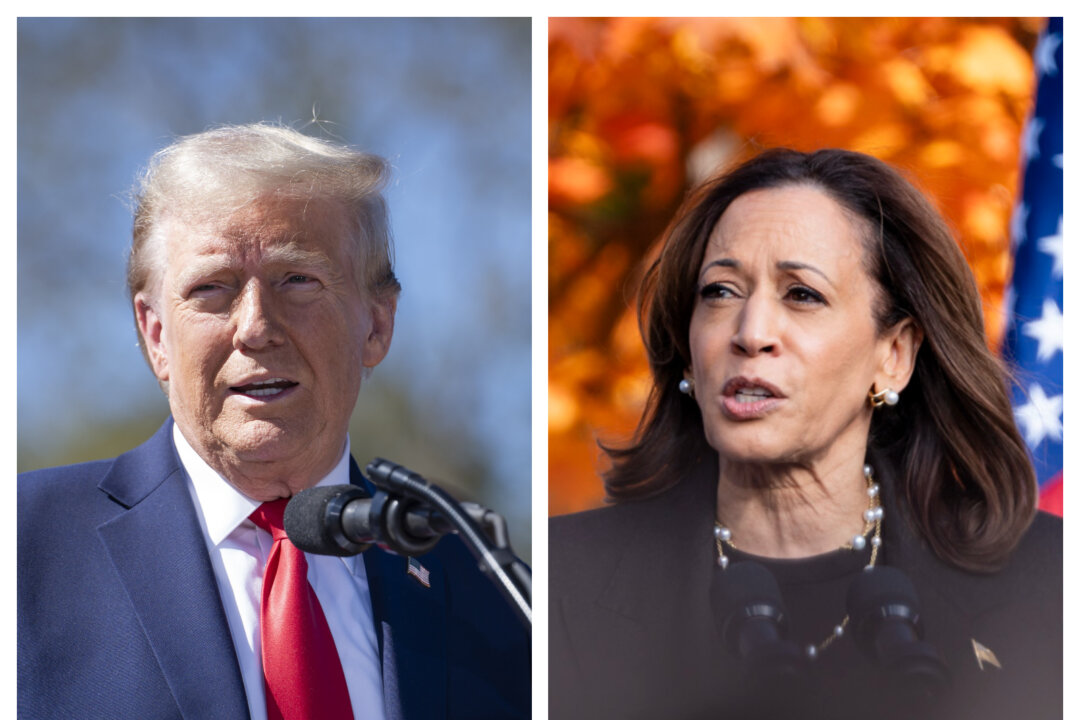So far, about 78 million people have voted early with just a day to go before the general election on Nov. 5.
With one day to go before the general election, more than 78 million people have voted so far, while data show that Republicans have come within 2 percentage points of Democrats for the early-vote total.
The majority, or 42.7 million, have voted early and in person, according to data from the University of Florida’s Election Lab. Meanwhile, about 35.8 million have returned mail-in ballots.
In states reporting by party affiliation, registered Democrats are ahead of registered Republicans by about 700,000 votes, a much closer gap than in 2020, primarily because Republican voters have shown a higher likelihood of voting early this year.
“The unexpected dynamic this election cycle is the high levels of in-person early voting, fueled by [former President] Donald Trump encouraging his supporters to vote in-person early, a departure from 2020 when he called all forms of early voting fraudulent,” wrote Michael McDonald, professor at the University of Florida, on Sunday evening.
“These new in-person early voters in 2024 might have voted by mail, voted in-person early, voted on Election Day, or didn’t vote. The last two are again the big unknowns: to what extent are these in-person early voters new voters or Election Day voters?”
One major reason for the surge is that that Trump has generally encouraged his supporters to vote early this year, a reversal from 2020 when he called on Republicans to vote only in person on Election Day. The early vote numbers confirm that millions of Republicans have heeded Trump’s call in recent weeks.
There are also shifts on the Democratic side. Four years ago, as the pandemic lingered, Democrats overwhelmingly cast their ballots early. But this time around, without the public health risk and government-imposed restrictions, it’s likely that more Democrats will show up in person on Election Day.
Vote-by-Mail Volume Down
In the 2020 election, some 65 million mail-in ballots were returned, compared with just 35 million in-person early votes, according to the election tracker. Vote by mail was more popular during that election due to restrictions connected to the COVID-19 pandemic and officials encouraging people to use mail-in ballots.
While early voting appears to be high in battleground states, the turnout may be lower in a handful of states that won’t likely swing during this election, added McDonald, who runs the Election Lab, in his analysis.
“One of the reasons I think turnout will be down outside the battleground states is that mail ballot return rates appear to be down in vote-by-mail states like California, Colorado, Oregon, Washington, and Utah. In a prior post I dug into Oregon and Washington since they have 2020 and 2016 comparisons,” he wrote. “They appear to be above 2016, but below 2020, which is why this range seems to be right for overall turnout.”
Breakdown
In the battleground state of Arizona, which reports mail-in ballots only, Republicans have about a 182,000-vote advantage, or about 8.2 percent, over Democrats so far, according to the tracker. For nearby Nevada, the GOP has a 43,000-vote advantage, or about 4.4 percent, over Democrats so far, it also shows.
Both states went to presidential candidate Joe Biden in the 2020 election over Trump.
In Pennsylvania, another swing state, about 1.7 million mail-in ballots have been returned, showing that Democrats have a 400,000-ballot lead over Republicans. The state has about 9 million registered voters, however.
Officials in North Carolina said that more than 4.2 million voters have cast ballots at early in-person voting sites, which was ravaged by Hurricane Helene in late September and cut off multiple areas in the western part of the state. The early in-person voting phase ended Saturday.
In 2020, a record 3.63 million people cast ballots in the Tar Heel State.
“I am proud of all of our 100 county boards of elections and the thousands of election workers who are making this happen in their communities,” state board Executive Director Karen Brinson Bell said in a Sunday statement. “And I am especially proud of the workers and voters of Western North Carolina. You are an inspiration to us all.”
With in-person voting closed, Republicans took an early vote lead of about 40,000 ballots, or about 1 percent, over Democrats, the data show.
Wisconsin, Michigan, and Georgia do not report by party affiliation. But polls have shown that those states appear to be close, too.
Final Day of Campaigning
Vice President Kamala Harris is spending Monday in Pennsylvania, whose 19 electoral votes offer the largest prize among the states expected to determine the Electoral College outcome. The vice president and Democratic nominee visited working-class areas, including Allentown, and will end with a late-night Philadelphia rally that includes Lady Gaga and Oprah Winfrey.
Trump has four rallies in three states, beginning in Raleigh, North Carolina, and stopping twice in Pennsylvania with events in Reading and Pittsburgh, both areas Harris is also visiting Monday. The Republican nominee and former president ends his campaign the way he ended the first two, with a late night event in Grand Rapids, Michigan.
The Associated Press contributed to this report.

